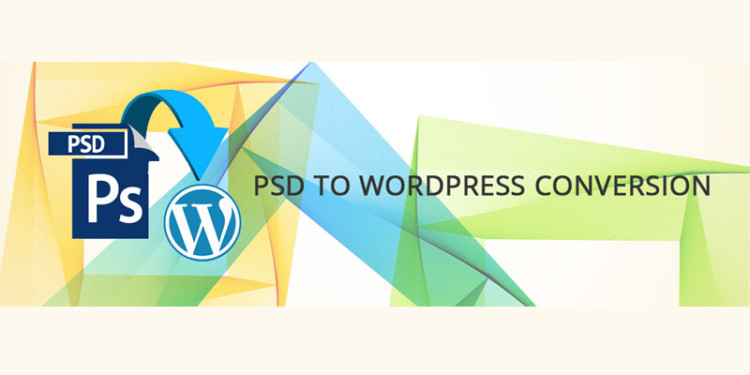How To Convert PSD To WordPress Services?
The internet revolution has hit the world big time and today we can witness a rise of new websites designed for businesses of all shapes and sizes. Having a professional website is a necessity today for which employers are willing to shed top dollars. Creating a website requires a set of expertise in writing efficient code as well as designing of user friendly and interactive designs.
While the design aesthetics can be beautifully presented in a PSD file, coding it can often be a challenge.
Thankfully, today we have open source website building tools and content management system such as WordPress which reduces most of the effort and lets us create quality website in a significantly reduced time frame. Non-programmers even have no barrier now as they are capable of creating dynamic and high quality websites with the efficient use of WordPress. In this article we will check the conversion of PSD to WordPress service in few simple steps.
- Slicing the PSD File
This is the primary and one of the most important steps for psd to WordPress conversion. It typically represents the cutting and slicing of the big image into its smaller components so that each small image can be made actionable with its own features and functionalities.
Major components should be looked upon first to slice your PSD in an easy way. These components are given as:
Background
Header and Separator
Footer
These days there are graphical software which make things even more convenient by allowing designers to create files which already have components presented in different layers. One of the most popular image editing software known as Adobe Photoshop is more preferably used to get this job done easily.
Use of images is an another major concern which can affect your web pages. Hence, optimize each image and decide well what needs to be created dynamically and static.
- Creating Index.html and style.css Files
After the slicing of PSD file, next comes the coding of these sliced images into HTML and creating its style using CSS. Dreamweaver and Fireworks are two most important softwares used for this purpose. One has to carefully code the functionalities over these sliced images by wisely examining the perfect pixel placement. One must also refer to few online resources such as W3Schools, TutsPlus, CSS Basics and others to get comprehensive knowledge on these platforms. There are plenty of examples and few online compilers to practice CSS and HTML.
- Breaking index.html into WordPress Theme
It would interest you to know that creating a custom WordPress website actually involves making use of PSD files to create a personalized WordPress theme. This theme is then uploaded on the WordPress software where it is accomplished using the available tools and plugins. Thus, it is highly essential to design the HTML file as per the WordPress theme. For this, Index.html (HTML file created in the above steps) is broken into multiple html files following the WordPress theme structure. These are kept into Index.html file and further divided into several other parts like header.php, index.php, sidebar.php and various other important feature files.This helps in better organization of code as the code is chopped and kept in different compartments by following the WordPress coding assembly. The process of Html to WordPress conversion is a crucial part of the theme anatomy.
- Adding WordPress Tags
The magic of WordPress is evident from its huge library of functions which are continuously updated from time to time. WordPress allows you to use hundreds of such functions that can be added onto your theme. Adding WordPress tags is a very easy task and simply adding these tags get you the desired functionalities that you are looking in your website. These tags are pre coded so once you add them. WordPress takes care of its workings.
You must also keep in mind that all the files have to be stored in the same folder and this folder must have the same name as the name of your theme. It must be placed into the /wp-content/themes/ path so that it is easily found during WordPress installation. This step is important as it lets you add the WordPress PHP tags on to your WordPress files so that together they form a completely functioning WordPress theme which can be activated through the WordPress Dashboard.
One can check out the following links for various available WordPress template tags and functionalities:
- Adding Functionalities
Once your theme is created and added into the WordPress software you might want to modify the existing functionality or add new functionality at some point. This would mean spending a lot of time and effort in changing the core HTML code. This problem is well addressed in WordPress. WordPress comes to your rescue and saves your from all these hassles. All you have to do is to install the plugin and configure the existing structure through the WordPress Dashboard.
- Here you go live!
The final step of your psd to wordpress conversion is all set to bring innovation to your dreams where each element is fully tested for their proper functionality process. Now, all you need to do is to incorporate the newly installed wordpress site with more advanced, refreshing and latest content and then you will surely go live.
Conclusion:
We just discussed the key points which are required for PSD to WordPress conversion. Your professional website is the face of your business and it truly reflects the personality of your business. Thus the importance of a top class website could not be neglected. Following these simple steps would enable you to create your own WordPress theme website that is graphically rich, high in quality and loaded with features.


